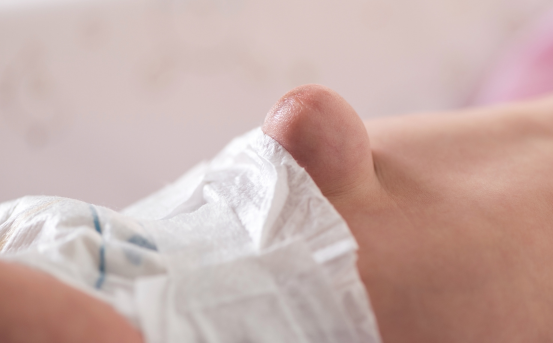Treatment for reconstructive urology surgery is a highly specialized branch of urology focused on restoring the normal function and structure of the urinary tract and reproductive organs. Whether caused by congenital anomalies, trauma, cancer treatments, or prior surgeries, urological damage can significantly affect a person’s quality of life. Fortunately, with advanced surgical techniques, reconstructive urology offers effective treatment solutions that restore both function and comfort.
Urological damage may result from a variety of causes, including congenital anomalies present from birth, pelvic trauma, complications from radiation therapy or cancer treatments, and side effects of previous urological surgeries. Such conditions not only lead to physical discomfort and pain but can also cause emotional distress, social withdrawal, and long-term health risks such as infections or kidney damage.
What Is Reconstructive Urology?
Reconstructive urology refers to surgical procedures aimed at repairing and restoring damaged or dysfunctional parts of the urinary tract and male reproductive system. This includes the kidneys, ureters, bladder, urethra, and male genitalia.
The goal of reconstructive urology surgery is to help patients regain normal urinary and sexual function, prevent further complications, and improve overall well-being.
Common Conditions That Require Reconstructive Urology Surgery
There are various medical conditions and injuries that may require reconstructive urological intervention:
-
Urethral Strictures :- Narrowing of the urethra due to scarring or injury.
-
Bladder Fistulas :- Abnormal connections between the bladder and surrounding organs like the vagina or bowel.
-
Trauma to Urinary Tract :- Accidents or pelvic injuries leading to damaged urinary structures.
-
Pelvic Radiation Damage :- Resulting from cancer treatments affecting the bladder or urethra.
-
Congenital Abnormalities :- Such as hypospadias or bladder exstrophy present at birth.
-
Neurogenic Bladder Dysfunction :- Where nerves controlling the bladder are impaired due to spinal injuries or diseases like multiple sclerosis.
-
Complications from Prostate or Bladder Surgery :- Including incontinence or erectile dysfunction.
Detailed Treatment for Reconstructive Urology Surgery
Depending on the condition, a urologist may recommend one of several surgical approaches. Here are the most common reconstructive urology surgeries:
Urethroplasty
Urethroplasty is the surgical reconstruction of the urethra to treat strictures. This can involve:
-
Excision and Primary Anastomosis :- Removing the narrowed section and reconnecting the healthy ends.
-
Graft or Flap Urethroplasty :- Using tissue from the mouth (buccal mucosa) or skin to widen or rebuild the urethra.
Bladder Reconstruction (Augmentation Cystoplasty)
This procedure is used when the bladder can’t store urine properly, often due to spinal cord injuries or congenital conditions. Surgeons use tissue from the intestine to enlarge the bladder, improving its storage capacity.
Urinary Diversion Surgery
For patients who have had their bladder removed (cystectomy), urinary diversion creates a new way for urine to leave the body. Options include:
-
Ileal conduit :- Using a piece of intestine to reroute urine to a stoma.
-
Continent urinary reservoir :- Creating an internal pouch with catheter access.
Repair of Fistulas
Fistulas (like vesico vaginal or rectourethral) are surgically repaired to close abnormal connections between the urinary system and other organs.
Penile and Genital Reconstruction
This may involve procedures for correcting curvature, implanting prostheses, or reconstructing the penis after trauma or cancer.
Artificial Urinary Sphincter (AUS) Implantation
For patients with severe urinary incontinence (especially post-prostatectomy), an artificial sphincter can be implanted to control urine flow.
Diagnosis Before Reconstructive Urology Surgery
Before surgery, a comprehensive diagnostic process is essential. This includes:
-
Imaging Tests:- MRI, CT scans, or ultrasound to view internal structures.
-
Cystoscopy :- A small camera inserted into the urethra to inspect the urinary tract.
-
Urodynamic Studies :- Tests to measure bladder function and urine flow.
-
Retrograde Urethrogram :- An X-ray to identify urethral narrowing.
Accurate diagnosis ensures that the most appropriate reconstructive approach is selected.
What to Expect During the Treatment Process?
- Preoperative Preparation
-
Medical evaluation and imaging
-
Discussions regarding treatment goals and surgical risks
-
Instructions on fasting and medication adjustments before surgery
- The Surgical Procedure
Reconstructive urology surgeries are performed under general or spinal anesthesia and may take several hours, depending on complexity.
Techniques include:
-
Open surgery
-
Minimally invasive laparoscopy or robot-assisted surgery
- Postoperative Care
-
Hospital stay may last from 1–5 days
-
Urinary catheterization is usually required temporarily
-
Pain management and antibiotics are prescribed
-
Regular follow-ups and imaging tests to monitor healing
Recovery and Rehabilitation
Recovery time can vary based on the type of surgery and individual health condition:
-
Mild procedures (e.g., simple urethroplasty) :- 2–4 weeks
-
Complex reconstructions (e.g., bladder augmentation) :- 6–12 weeks
During recovery, patients should:
-
Avoid heavy lifting or strenuous activity
-
Maintain good hygiene around surgical sites
-
Stay hydrated and follow dietary guidelines
-
Attend all follow-up visits for catheter removal or imaging
Benefits of Reconstructive Urology Surgery
-
Restored Urinary Function :- Ability to urinate normally and without pain
-
Improved Continence :- Enhanced bladder control in cases of incontinence
-
Better Quality of Life :- Increased comfort, mobility, and confidence
-
Enhanced Sexual Health :- In some procedures, erectile function can be preserved or restored
-
Prevention of Kidney Damage :- Addressing obstructions and infections that could otherwise impair kidney function
Risks and Complications
While generally safe, reconstructive urology surgeries do carry risks, such as:
-
Bleeding or infection
-
Scar tissue recurrence (especially in urethral surgeries)
-
Urinary leakage or incontinence
-
Erectile dysfunction in some genital surgeries
-
Need for revision surgery in rare cases
Choosing an experienced urologist significantly reduces the likelihood of complications.
Why Early Treatment Matters?
Delaying treatment can lead to:
-
Chronic urinary retention or infections
-
Kidney damage
-
Bladder failure
-
Emotional distress and reduced self-esteem
Early diagnosis and timely surgical intervention lead to better outcomes and easier recoveries.
Choosing the Right Urologist for Reconstructive Surgery
When considering reconstructive urology surgery, look for:
-
Board-certified urologists with subspecialty training
-
Experience in advanced reconstructive procedures
-
Access to state-of-the-art facilities and robotic surgery tools
-
Transparent communication and a patient-centered approach
Hospitals with dedicated urology departments or tertiary care centers are ideal for such procedures.
Conclusion
Reconstructive urology surgery plays a critical role in restoring urinary and sexual function in patients affected by trauma, congenital disorders, or previous surgeries. Thanks to modern surgical techniques and experienced specialists, many patients can regain control over their lives with minimal discomfort and a high success rate.
From urethroplasty for strictures to bladder reconstruction, urinary diversion, and genital reconstruction, the goal of each procedure is to restore normal function, reduce pain, and improve the overall quality of life. Importantly, many of these surgeries come with high success rates, reduced complication risks, and faster recovery times compared to traditional methods.























